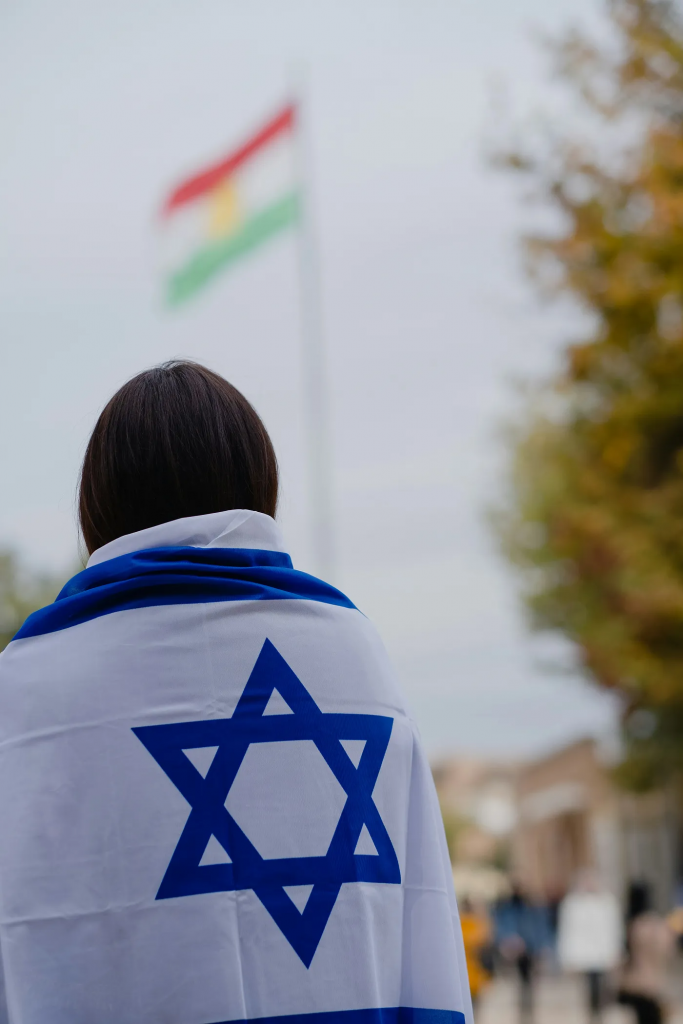The political left needs to stop this now

The Holocaust, known as Shoa for Jewish people, resulted in the tragic loss of six million Jewish lives, leaving an indelible imprint on global history and memory. Following the conclusion of World War II, the establishment of the state of Israel in 1948 provided a homeland for Jews who had endured displacement and suffering during the Holocaust. However, this historic event also contributed to the complex and enduring Israel-Palestine conflict, rooted in competing claims to land and identity. This conflict has remained a significant source of tension and debate on the international stage. Antisemitism, while historically associated with far-right extremism, has also manifested within certain factions of far-left political movements. In contemporary discourse, there are instances where criticism of Israel’s policies or actions has crossed into antisemitic rhetoric. Ironically, it started in Germany itself again. In Germany, far left terrorist groups in the 1960’s and 1970’s carried out antisemitic violence,plotted to bomb a synagogue and celebrated terrorist attacks on Israeli civilians. As an article from Arie Perliger in “The Conversation”, published October 25 2023, states:
“In a survey conducted in 2018 in 12 European Union
countries among victims of antisemitism, 21% indicated that they were physically or verbally attacked by what participants called “left-wing” activists.”.
Most strikingly, we saw antisemitic narratives from the far-left after the October 7th attack from Hamas on Israel, excusing and even sympathizing with Hamas, which is a terror organization. Where does this come from?
An often overlooked source of far left antisemitism are certain interpretations of intersectional theory, first coined by Kimberle´ Crenshaw. Some argue that far left intersectionality shows elements of totalitarianism by building a moral hierarchy of who is to be considered more of a victim than another, disregarding special forms of racism and discrimination like in the case of Jewish people and white men who suffer from discriminatory social prejudices constantly.
This is a good time to make a few general disclaimers about this article:
- In this Essay I will criticize a certain interpretation of intersectional theory, namely Queer-feminist intersectionality. I do not criticize but rather agree with intersectional theory in general.
- I will cite conservative Jewish commentator Ben Shapiro. I do not agree with his political ideology but wanted to show his perspective as a conservative Jewish man, criticizing intersectional theory.
- As a muslim, I have great empathy for the suffering of the palestinian people and this is no attempt to deny Israel’s persecution of the Palestinians.
- There are three forms of antisemitism: Islamist’s antisemitism, far-right antisemitism and far-left antisemitism. I put my focus on far-left antisemitism in this essay, which is no attempt to disregard the other forms of antisemitism that are more severe. Moreover, it is no attempt to criticize the political left as a whole.
This is an attempt to analyze the rise of antisemitism within a group that we do not associate it with primarily.
While Crenshaw’s description of intersectionality is the root of intersectionality, over time many different approaches on how to interpret discrimination through the lens of intersectionality have emerged. One prominent approach of antisemitism is the Queer-feminist intersectionality.The mentioned Journal points out, the so-called Whiteness framework, designed to expose structural racism, proves ineffective in addressing antisemitism and may even inadvertently reinforce it. Privileges associated with Whiteness encompass power, influence, wealth, property ownership, educational access, dominance, participation, amplification of voices, social circles, and entrenched generational positions. When applied to the White majority, this framework can unveil ingrained power dynamics. However, when applied to the Jewish minority, it risks perpetuating antisemitic stereotypes, such as the notion of Jews wielding disproportionate influence in business, politics, and media. A concrete example of antisemitism in the context of Queer-feminist-intersectionality “was seen, for example, in June 2017, on the occasion of the Lesbian “Chicago Dyke March” from which two participants were excluded for carrying a rainbow flag with a Star of David. This was deemed a symbol of Zionism that made other participants feel uncomfortable Jews were welcome on the march as long as they espoused anti-Zionism, according to the organizers. No other form of nationalism suffered such a ban”. In contexts where Jews demonstrate success, the realms of anti-Semitism and intersectional theory frequently intersect. A significant portion of Jews possess white skin, are highly educated, and enjoy wealth, while the state of Israel holds considerable power. Consequently, within the intersectional framework, Jews often occupy a position near the top in terms of privilege. So, anti-Semitism is typically condemned only when articulated by white supremacists — individuals belonging to a group even more privileged than Jews. Conversely, when expressed by others within the intersectional hierarchy, anti-Semitism is often not recognized as such, but rather viewed as a normative aspect of intersectional analysis. Conservative and jewish political commentator Ben Shapiro writes in of his articles for the JewishPress.com: “Intersectional theory posits identity groups as the chief factor in determining morality. That sort of thinking has never cut in favor of Jews. And it doesn’t now, either. Pretending that Jews are part of the intersectional hierarchy is simply siding with the intersectional alligator, hoping that it eats the Jews last.”
One very prominent case of intersectional antisemitism were Whoopi Goldberg’s, who is a moderator of the Talk Show “The View”, remarks on the Holocaust. She described it as “not about race … it’s about man’s inhumanity to other man.”. She further proceeded to frame the Holocaust as a “white man against white man” event, which later led to her suspension from The View.
The idea of “white supremacy” on which Queer-feminist intersectional theorists build their political theories and policies on, makes the whole movement an ideology that is constantly used to excuse antisemitic behavior from far-left people. It was Islamist’s antisemitism that led to the horrors of October 7th 2023 but it was Queer-feminist ideology that led to excusing narratives for the attack and that should be equally condemned.
References:
Crenshaw, Kimberle. “Demarginalizing the Intersection of Race and Sex: A Black Feminist Critique of Antidiscrimination Doctrine, Feminist Theory and Antiracist Politics.” University of Chicago Legal Forum, vol. 1989, no. 1, 1989, pp. 1–27.
https://fathomjournal.org/intersectionality-and-antisemitism-a-new-approach/ (access: March 16, 3pm)
Stögner, Karin. “Antisemitism and Intersectional Feminism: Strange Alliances”. Volume 5 Confronting Antisemitism in Modern Media, the Legal and Political Worlds, edited by Armin Lange, Kerstin Mayerhofer, Dina Porat, and Lawrence H. Schiffman, Berlin, Boston: De Gruyter, 2021, pp. 69–88. https://doi.org/10.1515/9783110671964-006
https://www.jewishpress.com/indepth/opinions/intersectionality-leads-to-ignoring-anti-semitism/2018/11/19/ (March 16 11pm)

